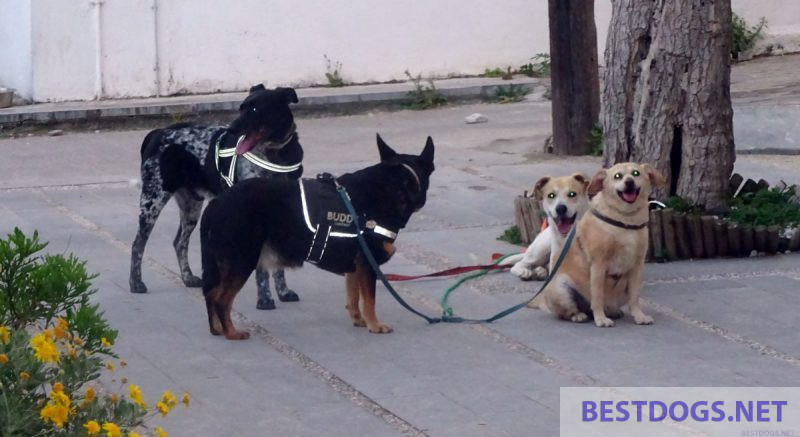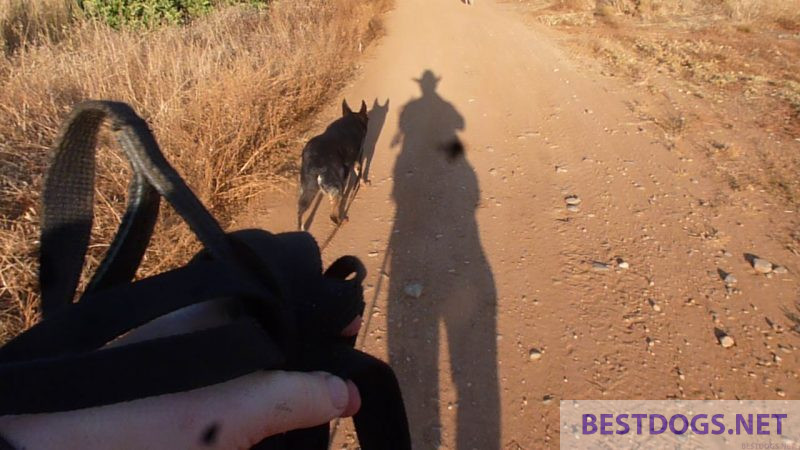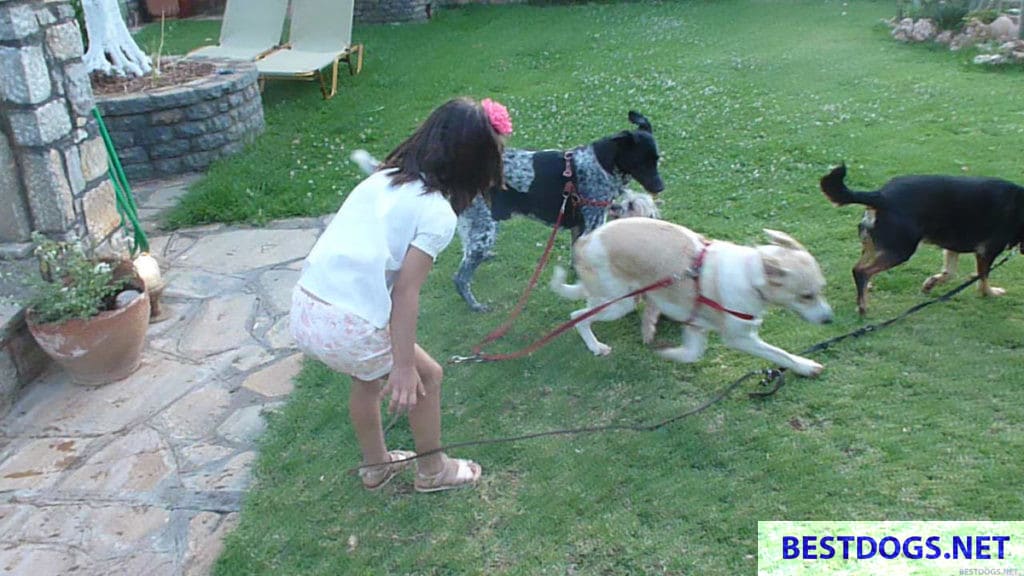Reduce or eliminate stress in dogs.
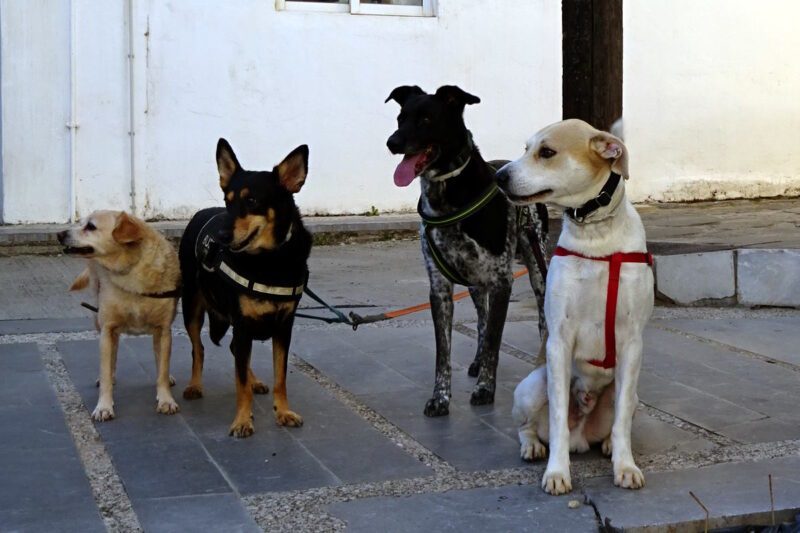
Useful training techniques to eliminate stress
Table of Contents
Often a dog’s training is hindered by being too stressed to concentrate on learning a new behaviour or even to cope with the added pressure.
A highly stressed dog can hear its master, but is unable to listen because of the adrenaline pulsing in its body. In the same way, an excited, hyperactive dog cannot learn because it cannot concentrate.
So if you help the dog to stay calm, you have a much better chance of influencing unwanted behaviour. A relaxed dog is a receptive dog. Therefore, every dog owner should know how to reduce or eliminate stress.
Therefore, I present here three techniques that have proven to be effective in helping a dog stay calm and combat stress: the calm mode, mat training and the command ‘watch me’.
Resting mode
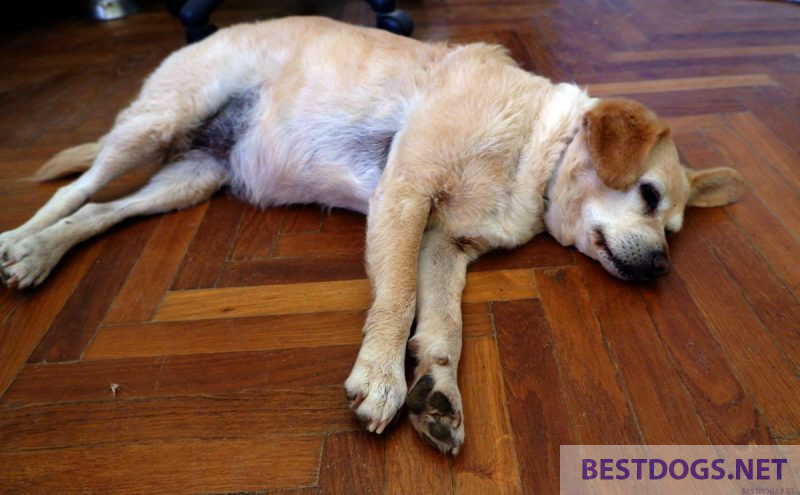
The calming programme to achieve a resting mode is based on the fact that it is impossible to be relaxed and tense at the same time.
When a dog is alarmed, the autonomic nervous system is activated and prepares it to run away or fight. Once the stressor is removed, the parasympathetic nervous system takes over and stretches and relaxes the muscles. Achieving this can be particularly useful if you have a dog that is very excitable or prone to stress and anxiety.
In this programme, the dog is taught a resting mode position that automatically activates the parasympathetic nervous system, helping him to feel calm and relaxed. The dog must never be forced into this position, as this would have the opposite effect by making its muscles tense, which could be also potentially dangerous.
Training the rest mode
The starting point for this is the command ‘Sit’. To teach the dog this command word (or another for the same purpose), use the training method with the clicker and treat.
The next step is to use a treat to get the dog from sitting to lying down. To do this, use the command ‘Down’, together with a click and the treat.
The animal should not be pushed into this position with the hands, as this is very intrusive and does not contribute to relaxation.
Finally, when the dog is lying down, use the command word ‘Calm’ and repeat it while placing a treat between its front legs, which brings its head lower. The aim is for the dog to lie as low and relaxed as possible, although his legs can be stretched out, and he can lie flat on his side.
There are many variations depending on the type: Some dogs do not like to lie flat, so judgement should be used to determine the appropriate resting position for your own dog.
Give the dog treats as low as possible, about below heart level, to relax the body and thus also the mind. While doing this, click the clicker regularly so that the dog constantly receives positive reinforcement for his behaviour and learns that being relaxed with his master is a pleasant experience.
If you feel resistance to the command, don’t worry, just take another step back and try again later.
For dogs who find it difficult to stay calm, it can be helpful to just stand in one place and focus on them for thirty seconds. Once the dog has reached a greater level of relaxation, you should stop reinforcing this with clickers, as this can alert the dog and prevent them from relaxing fully.
Rocco & Roxie Supply Co. Stain & Odor Eliminator for Strong Odor, 32oz Enzyme Pet Odor Eliminator for Home, Carpet Stain Remover for Cats & Dog Pee, Enzymatic Cat Urine Destroyer, Carpet Cleaner Spray
$19.31 (as of April 24, 2024 09:05 GMT +03:00 - More infoProduct prices and availability are accurate as of the date/time indicated and are subject to change. Any price and availability information displayed on [relevant Amazon Site(s), as applicable] at the time of purchase will apply to the purchase of this product.)WORLD'S BEST CAT LITTER Multiple Cat Unscented, 32-Pounds - Natural Ingredients, Quick Clumping, Flushable, 99% Dust Free & Made in USA - Long-Lasting Odor Control & Easy Scooping
$38.55 (as of April 24, 2024 09:05 GMT +03:00 - More infoProduct prices and availability are accurate as of the date/time indicated and are subject to change. Any price and availability information displayed on [relevant Amazon Site(s), as applicable] at the time of purchase will apply to the purchase of this product.)Rachael Ray Nutrish Premium Natural Dry Dog Food, Real Beef, Pea, & Brown Rice Recipe, 40 Pound Bag (Packaging May Vary)
$53.00 (as of April 24, 2024 09:05 GMT +03:00 - More infoProduct prices and availability are accurate as of the date/time indicated and are subject to change. Any price and availability information displayed on [relevant Amazon Site(s), as applicable] at the time of purchase will apply to the purchase of this product.)Mat training
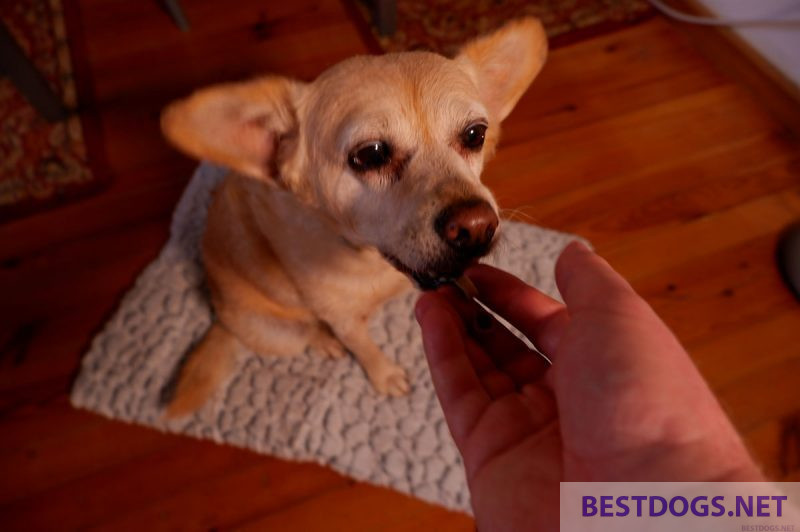
Mat training is an additional method to promote relaxation and concentration. It is about teaching the dog that the mat meant safety and that this is a place where he can feel comfortable.
This makes the portable mat a useful tool for calming your own dog when you visit friends or need to take him to more serious occasions.
The mat itself should be made of a warm material that is comfortable and reassuring for the dog. Fluffy materials are good, and a thermal backing is ideal so that the cold of the floor does not penetrate. You can also lay out a mat in different places if you are trying to do stationary training.
Emotional advantage of warm materials
The ability of a soft, warm fabric to comfort an animal was demonstrated in the 1950s by Harry Harlow in his research on deprivation in baby monkeys.
One group of monkeys received food from a surrogate mother covered with wire, the other from a ‘mother’ wrapped in soft terry cloth. When both groups were startled by a mechanical toy, the group with the cloth-covered ‘mother’ clung to it, while the other group threw themselves on the floor and rocked back and forth under considerable stress.
Fortunately, these unethical experiments are no longer permitted, but it has been observed that dogs derive an emotional benefit from warm material and, if they can choose, prefer such mats to materials such as rubber or even the bare floor.
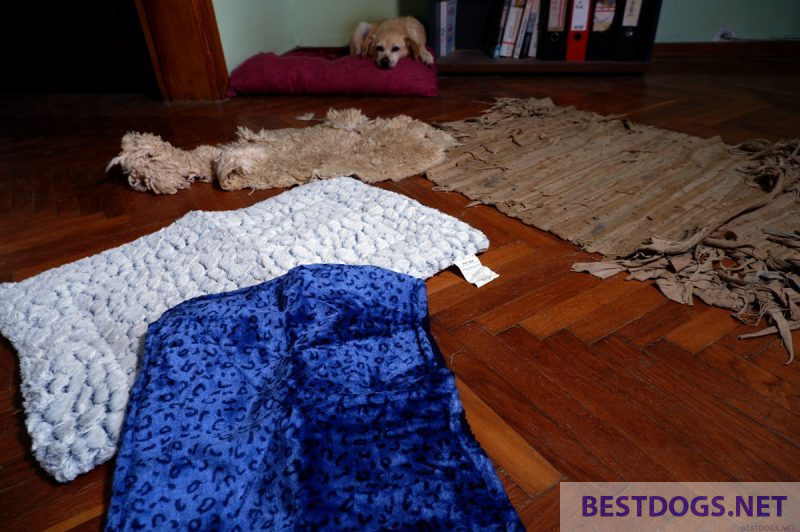
Training the mat command
Again, it is important that the dog is not manoeuvred into the desired position with the hands, but that its behaviour is shaped so that it understands what is being asked.
This shaping has the added advantage of being an effective mental exercise for the dog. But please always remember: only a little and more often, i.e. after five to ten minutes or when the dog starts to lose concentration, take a break.
- The aim is to teach the dog to make a positive association between the mat and his safety.
- The mat should be large enough for the dog to lie on without overhanging the edge.
- First, reward the dog for being near the mat or touching it with his nose or paws. To do this, lead him to the mat with the command ‘mat’ and use the clicker when he puts a paw on the right spot.
- Repeat this exercise until he really understands the principle, i.e. when he goes to the mat on the command ‘mat’. From then on, the command ‘Sit’ can be used when he is already standing on the mat.
- Continue with the commands ‘mat’, then click and treat, then ‘sit’ followed by the click and treat until the dog goes to the mat and sits already by itself without the additional command ‘sit’.
- To make it easy for the dog to learn this command, you should first stand in front of the mat. The word ‘mat’ is used when he stands further away, and he already receives a reward when he goes into this area.
- Then one’s own distance to the mat is increased before the command is given. You look or point at the mat to tell the dog what to do.
- Now you can ask your dog to lie down on the mat. We will see if he has learned to reach the mat and then lie down. Although many dogs can learn this quickly, there are also those who do not manage it so soon, which is why you should take it slowly and with frequent breaks.
Never punish the dog if it does not do what you ask. Because that would defeat the purpose of the exercise, which is to teach him to relax. This can only be achieved if he is positively encouraged along the way. - The next phase is to train the dog to stay on the mat. This starts by asking the dog to stay on the mat and then pause for a few seconds. If he remains calm, a click is given and a treat is given.
But if he jumps up or moves instead, you ask him to do something easier, like sit on the mat. Then you can click and do a reward.
This procedure also helps to rehearse the command he is to be taught !
You shouldn’t worry if he doesn’t get it right away. Training should be fun and enjoyable for both dog and owner. - As soon as the dog can be made to stay still for a moment, increase the time to three seconds, then four, five and so on. You stay in the same place and do not move away from the dog and the mat.
- When he can stay on the mat for thirty seconds, it is possible to start increasing the distance to him. This is much more difficult because most dogs naturally want to be with their masters, so you should slowly move away one step at a time.
During all this, the clicker should be used, and the dog should receive a reward every time he does what is asked of him. If he does not do what is asked, you go back one step in the training to the things he has mastered and reward him.
The command ‘Watch me’
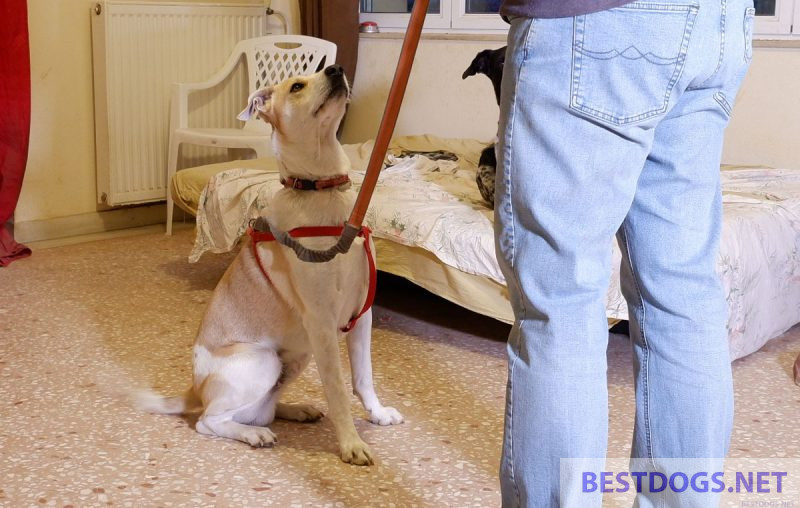
The principle of the command ‘Watch me’ is to draw the dog’s attention to the handler. This is very useful if the dog gets excited by something in the environment when he is out with the master. It also has the added benefit of making leash work easier.
By teaching him to look intently at his own person at any stage of a situation that worries him, his agitated emotional response can be channelled into calm channels.
For example, if you know that bicycles worry the dog, as soon as a bicycle approaches, you give the command ‘Watch me’ to divert his attention from the bicycle to yourself.
This command is very useful for so-called counter-conditioning, a method in which one behaviour is replaced by another. Since the dog learned the command ‘Watch me’ when he was calm and relaxed, he will associate the action with that state.
In other words: In the case of bicycles, you condition him to be calm and relaxed in the presence of cyclists. Over time, this state will replace his previous fear so that he no longer feels the need to bark anxiously when a cyclist passes.
How to train ‘Watch me’
- It is best to start training in a quiet place with few distractions. The garden is a suitable place to start, as the dog knows this place and it is manageable and possible distractions can be limited.
- The dog is kept on a leash. At a moment when he is looking elsewhere, you say the command word ‘Watch me’ to him. It should be said in a friendly tone and at a higher pitch than normal, and when he looks at you, you click the clicker and give a treat.
- Then take a few steps forward and say the command word again. When he responds, you click again and give the treat.
- Before you try this in another place, you should be sure that he always responds to the command word in the garden.
- Now visit other places, but they must be reasonably quiet. A distracted, stressed or anxious dog will have difficulty listening because his attention will be focused on the problem that is obvious to him.
- On each walk, the command ‘Watch me’ should be used only two or three times. This will ensure that the dog responds to the command word and does not become numb.
- If he does not react, he is probably too excited to ‘hear’ the master. So you better then move on and say it again when you are convinced he is less distracted by what is going on around him.
- This involves slowing down or stopping the pace altogether to make it easier for him in situations where he finds it difficult to learn. As with any other training, it should always be done when there is the greatest chance of success.
- Finally, try to get him to look up or even make brief eye contact while walking by using the command word ‘Watch me’.
The command ‘Watch me’ is an excellent tool to divert the dog’s attention from a possible fear stimulus. This means that you can reward calm behaviour and support the reinforcement of positive emotions around the cause of his anxiety, reducing or even eliminating the problem.
With practice, his response to this command becomes ‘automatic’. Furthermore, in a situation that he perceives as stressful, the dog may even turn to face his owner, even though he has not been asked to do so. This then proves that the dog’s reaction to fear-inducing stimuli has been successfully changed !
